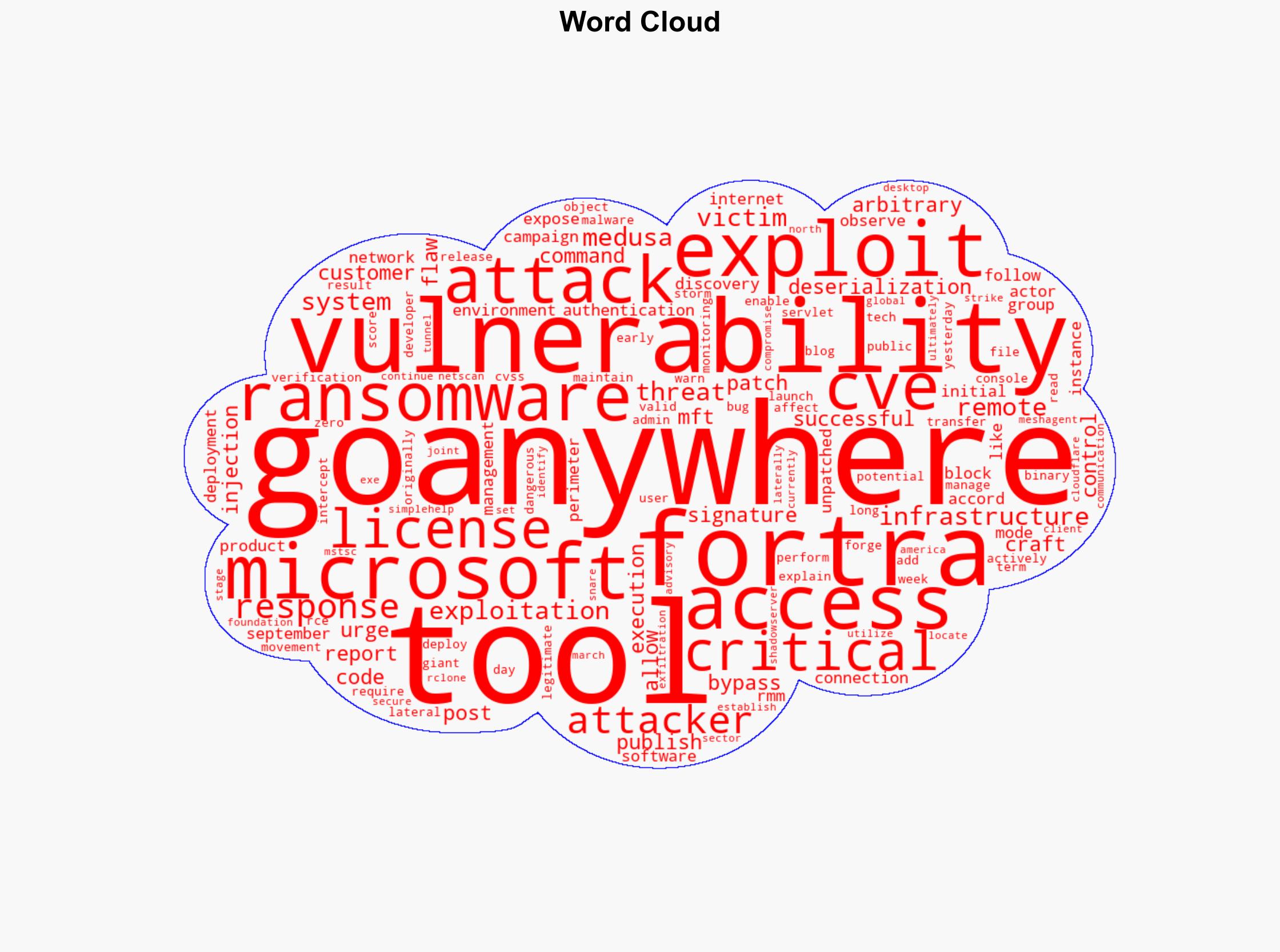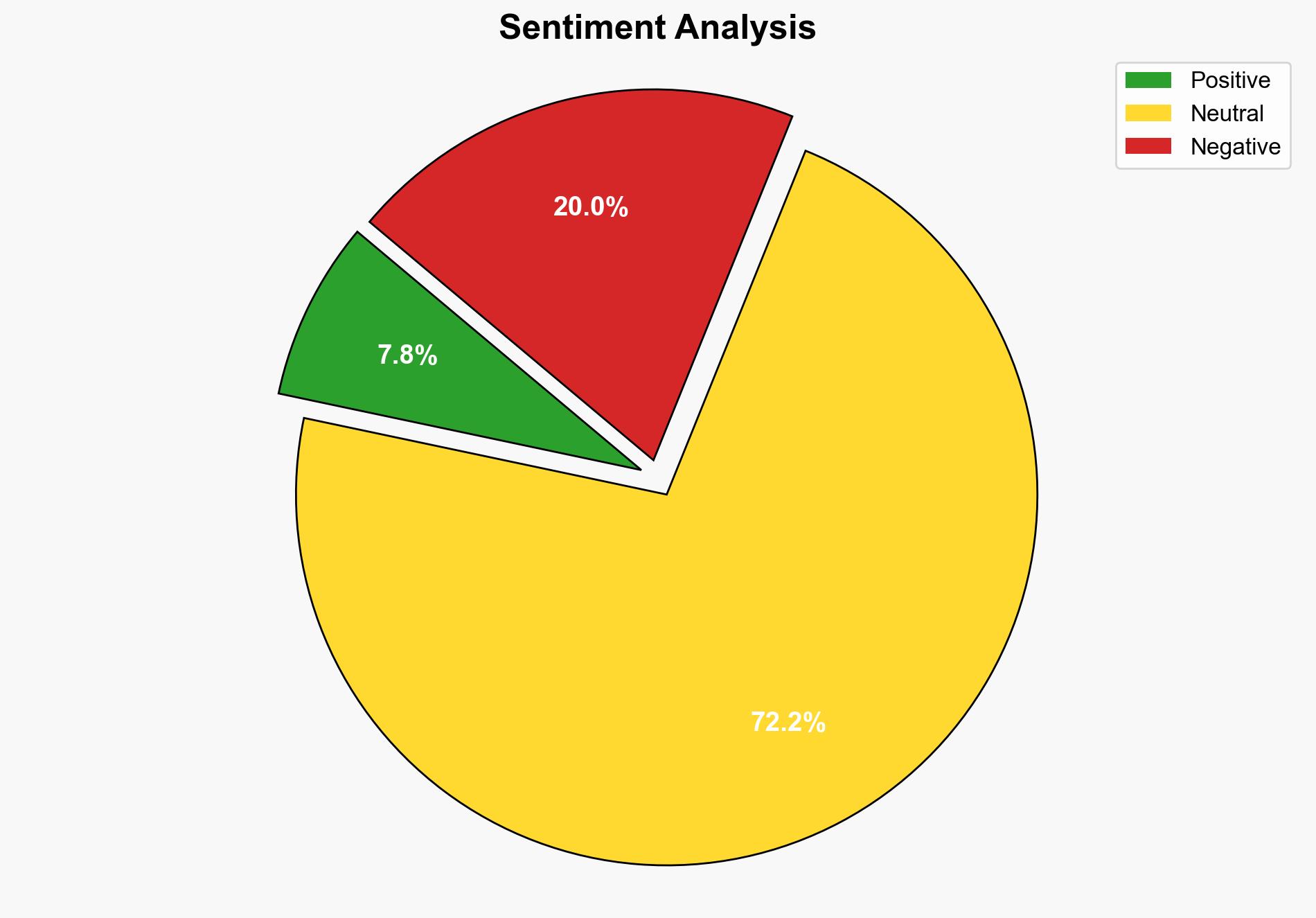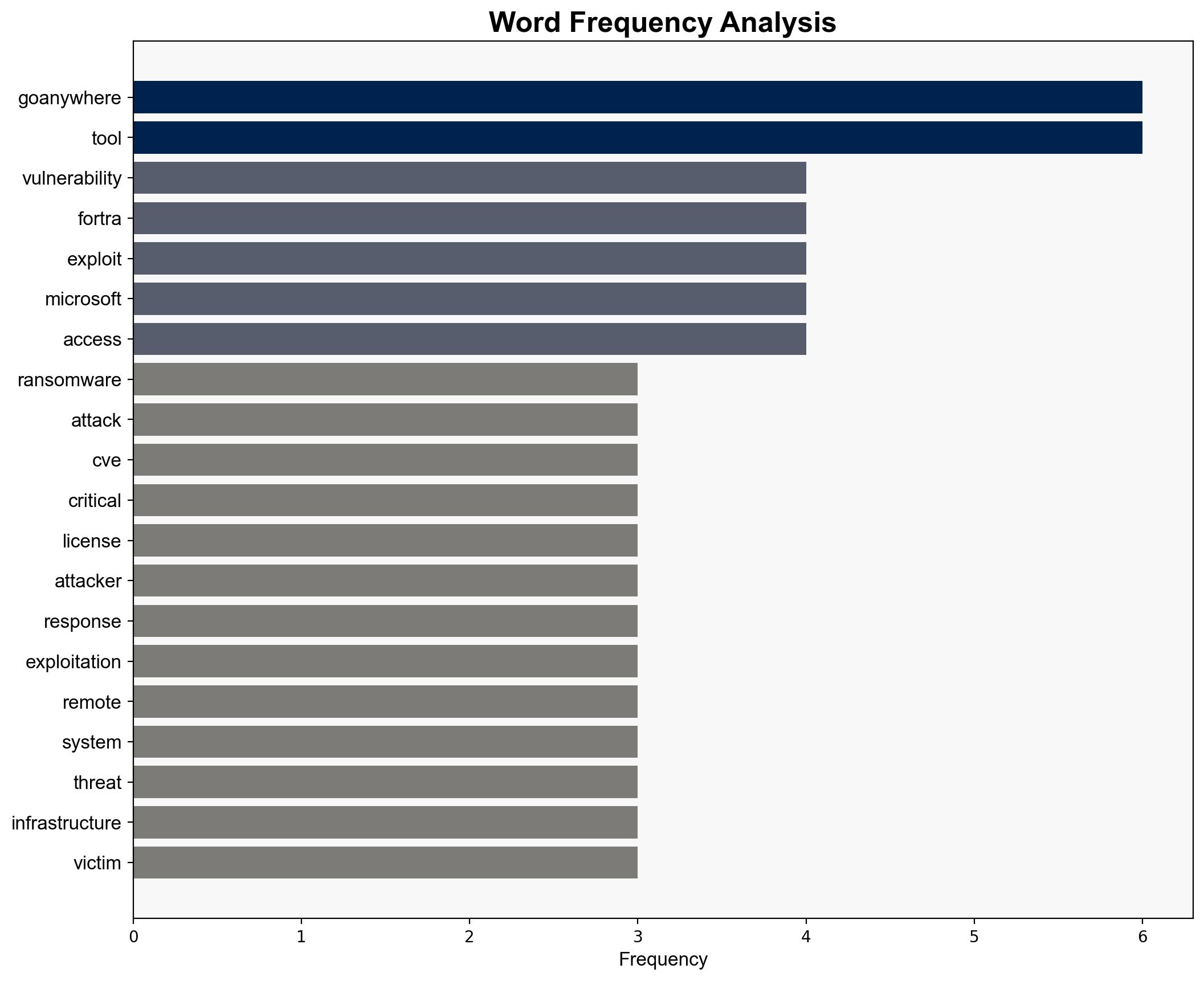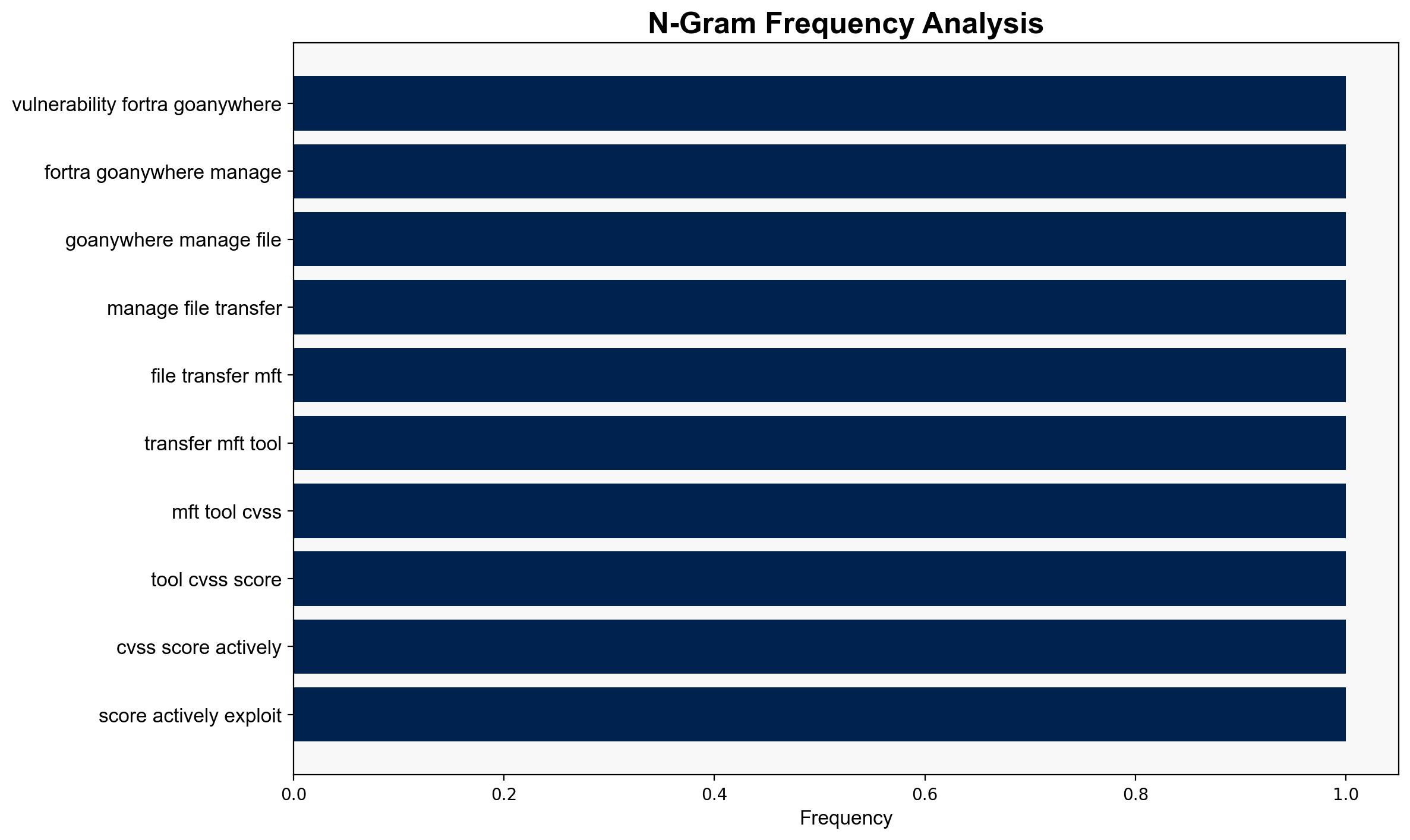Microsoft Critical GoAnywhere Bug Exploited in Medusa Ransomware Campaign – Infosecurity Magazine
Published on: 2025-10-07
Intelligence Report: Microsoft Critical GoAnywhere Bug Exploited in Medusa Ransomware Campaign – Infosecurity Magazine
1. BLUF (Bottom Line Up Front)
The exploitation of the GoAnywhere MFT vulnerability by the Medusa ransomware group poses a significant threat to critical infrastructure, particularly in North America. The most supported hypothesis suggests that the exploitation is part of a coordinated campaign targeting unpatched systems to gain long-term access and deploy ransomware. Confidence level: High. Immediate action is recommended to patch vulnerable systems and enhance monitoring capabilities.
2. Competing Hypotheses
Hypothesis 1: The Medusa ransomware group is exploiting the GoAnywhere vulnerability as part of a targeted campaign against critical infrastructure sectors, leveraging unpatched systems to establish persistent access and deploy ransomware.
Hypothesis 2: The exploitation of the GoAnywhere vulnerability is opportunistic, with multiple threat actors independently targeting exposed systems without a coordinated campaign, leading to a broader range of affected sectors.
Using the Analysis of Competing Hypotheses (ACH) 2.0, Hypothesis 1 is better supported due to the observed pattern of attacks on critical infrastructure and the use of sophisticated tools for lateral movement and persistence, indicating a strategic approach rather than random exploitation.
3. Key Assumptions and Red Flags
Assumptions:
– The Medusa group has the capability to exploit the vulnerability effectively.
– Critical infrastructure sectors are the primary targets.
Red Flags:
– Lack of detailed attribution to specific actors beyond the Medusa group.
– Potential underreporting of affected sectors outside North America.
4. Implications and Strategic Risks
The exploitation of this vulnerability could lead to significant disruptions in critical infrastructure, affecting economic stability and national security. The potential for cascading effects includes increased ransomware demands and further exploitation by other threat actors. Geopolitically, this could strain international relations if state-sponsored actors are suspected.
5. Recommendations and Outlook
- Urgently patch all vulnerable GoAnywhere MFT systems and conduct thorough security audits.
- Enhance network monitoring and endpoint detection to identify and mitigate lateral movement.
- Scenario Projections:
- Best Case: Rapid patching and improved defenses prevent further exploitation.
- Worst Case: Widespread ransomware deployment leads to significant operational disruptions.
- Most Likely: Continued targeted attacks on unpatched systems with moderate impact.
6. Key Individuals and Entities
– Medusa ransomware group
– Fortra (developer of GoAnywhere MFT)
– Microsoft (issuer of the security warning)
7. Thematic Tags
national security threats, cybersecurity, counter-terrorism, regional focus




